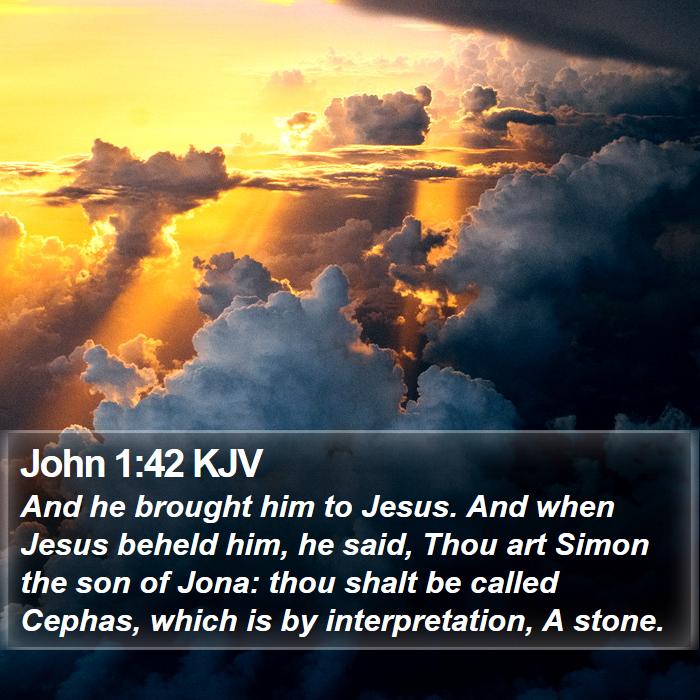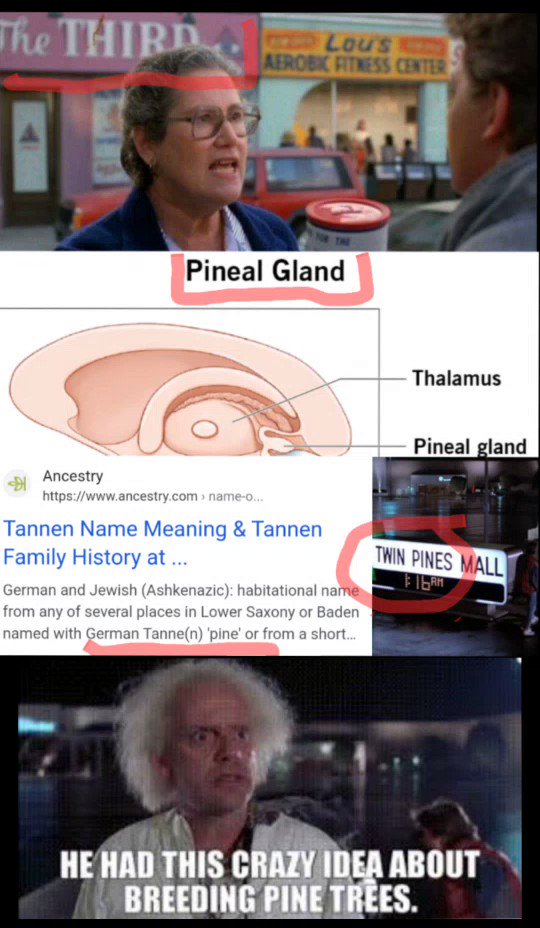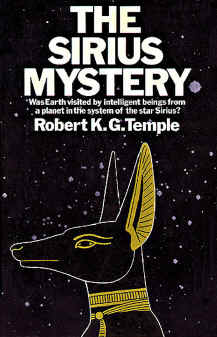Pocos textos han sido ocasión para que se derrame más tinta que Mateo 16:17-19:
Y Jesús le respondió: “¡Bienaventurado eres, Simón, hijo de Jonás! Porque esto no os lo ha revelado carne ni sangre, sino mi Padre que está en los cielos. Y te digo, tú eres Pedro, y sobre esta roca edificaré mi iglesia, y los poderes de la muerte no prevalecerán contra ella. Yo te daré las llaves del reino de los cielos, y todo lo que ates en la tierra quedará atado en los cielos, y todo lo que desatares en la tierra quedará desatado en los cielos”.
Para los católicos, este texto es claro. Los doce apóstoles estaban presentes, pero Jesús prometió dar a Peter solo las llaves del reino, simbolizando la autoridad de cristo—la autoridad del cielo—sobre el reino de los cielos en la Tierra, que es la Iglesia. Sin embargo, millones de protestantes creen que hay una distinción de significado en el texto griego entre las dos “rocas” que eliminaría a Pedro de la consideración de ser de la forma más roca.
"Tú eres petros y sobre esto Petra Construiré mi iglesia”. La primera roca, petros, se dice que se refiere a una pequeña e insignificante roca: Pedro. El segundo, Petra, se dice que significa una enorme roca: sería la confesión de fe de Jesús o de Pedro. El argumento concluye que Jesús construyó su iglesia no sobre San Pedro, sino sobre sí mismo o sobre la fe de Pedro.
A continuación se presentan siete razones, entre muchas otras que podríamos examinar, por las que Pedro es innegablemente la roca:
1. El evangelio de Mateo, tenemos evidencia bastante sólida, fue escrito originalmente en arameo. Santos. Papías e Ireneo nos lo dicen en el siglo II. Pero lo que es aún más importante —y más seguro— es que Jesús no habría pronunciado su discurso de Mateo 16 en griego. El griego era el idioma dominante del Imperio Romano en el siglo I, pero la mayoría de los judíos comunes con quienes Jesús habló no lo hablaban con fluidez. El arameo era su lengua hablada.
Además, tenemos evidencia bíblica—Juan 1:42—que también señala que Jesús usó el arameo al nombrar a Pedro: “[Andrés] trajo [a Pedro] a Jesús. Jesús lo miró y le dijo: '¿Entonces tú eres Simón, hijo de Juan? Te llamarás Cefas'” (que significa Pedro).
Su nombre Cefas es una forma inglesa del arameo Kefa, que significa simplemente "roca". No se habría encontrado ninguna “piedra pequeña” en la declaración original de Jesús a Pedro.
Incluso los eruditos protestantes más respetados estarán de acuerdo en este punto. El erudito bautista DA Carson, escribe, en Comentario bíblico del expositor,
El arameo subyacente es en este caso incuestionable; y muy probablemente kepha se usó en ambas cláusulas (“tú eres kepha” y “en esta kepha”), ya que la palabra se usó tanto para un nombre como para una “roca”. La Peshitta (escrita en siríaco, un idioma relacionado con un dialecto del arameo) no hace distinción entre las palabras de las dos cláusulas.
2. En griego koiné (el dialecto del griego utilizado por los autores del El Nuevo Testamento), petros Petra son formas masculinas y femeninas de palabras con la misma raíz y la misma definición: Rock. Tampoco se encuentra ninguna “piedra pequeña” en el texto griego.
Entonces, ¿por qué Mateo usó estas dos palabras en el mismo versículo? Petra era una palabra común utilizada para “roca” en griego. Se usa quince veces para significar “roca”, “rocas” o “rocoso” en el Nuevo Testamento. Petros es un término griego antiguo que no se usaba comúnmente en griego koiné. De hecho, nunca se usó en el Nuevo Testamento, excepto en el nombre de Pedro después de que Jesús lo cambió de Simón a Pedro.
De ello se deduce que cuando Mateo estaba traduciendo, habría usado Petra para "roca". Sin embargo, al hacerlo, se habría topado con un problema. Petra es un sustantivo femenino. Habría sido impropio llamar a Peter Petra. Esto equivaldría a llamar a un hombre “Valerie” o “Priscilla” en inglés. Por eso, petros se usó en lugar de Petra por el nombre de Pedro.
3. Hay varias palabras que el autor inspirado podría haber usado para Rock or stone en griego. Petra Lithos fueron los más comunes. Podrían usarse indistintamente. La connotación de “grande” o “pequeño” con cualquiera de ellos dependería del contexto. Las palabras simplemente significaban Rock or stone.
Craig S. Keener, otro erudito protestante, en la página 90 de El comentario de trasfondo bíblico del Nuevo Testamento del IVP, afirma: “En griego (aquí), ellos (refiriéndose a petros y petra) son términos afines que se usaban indistintamente en este período”. DA Carson señala que la distinción grande/pequeño existía en griego, pero sólo se encuentra en el griego antiguo (utilizado entre los siglos VIII y IV a. C.), e incluso allí se limita principalmente a la poesía. El Nuevo Testamento fue escrito en griego koiné (usado desde el siglo IV a.C. hasta el siglo V d.C.). Carson está de acuerdo con Keener y con los católicos en que no hay distinción en la definición entre petros Petra.
Uno de los diccionarios griegos más respetados y referenciados entre los evangélicos es el de Gerhard Kittel. Diccionario teológico del Nuevo Testamento. En una declaración muy sincera sobre Mateo 16:18, el Dr. Oscar Cullman, editor colaborador de esta obra, escribe:
El juego de palabras obvio que se ha abierto camino en el texto griego. . . sugiere una identidad material entre petra y petros. . . ya que es imposible diferenciar estrictamente entre las dos palabras. . . . El propio Petros es esta petra, no sólo su fe o su confesión. . . . La idea de los reformadores de que se refiere a la fe de Pedro es bastante inconcebible. . . . Porque aquí no hay ninguna referencia a la fe de Pedro. Más bien, el paralelismo entre “tú eres Roca” y “sobre esta roca edificaré” muestra que la segunda roca sólo puede ser la misma que la primera. Es, pues, evidente que Jesús se refiere a Pedro, a quien ha puesto el nombre de Roca. . . . En este sentido, la exégesis católica romana es correcta y todos los intentos protestantes de evadir esta interpretación deben ser rechazados.
4. Si Mateo quisiera distinguir “rocas” en el texto, lo más probable es que hubiera usado Lithos. Como se indicó anteriormente, Lithos podría referirse a una roca grande, pero se usaba más comúnmente para indicar una piedra pequeña. Sin embargo, hay una tercera palabra que Mateo podría haber usado y que siempre significa piedra pequeña: psefos. Se usa dos veces en Apocalipsis 2:17 como “piedra pequeña” cuando Jesús dice: “Al que venciere, le daré del maná escondido, y le daré una piedra blanca, con un nombre nuevo escrito en la piedra”. que nadie conoce sino aquel que lo recibe”. Aquí tenemos una palabra griega que, a diferencia de Lithos Petra, siempre tiene una connotación de “piedra pequeña” o “guijarro”.
5. Una línea de razonamiento más simple se aleja de los idiomas originales y examina el contexto inmediato del pasaje. Noten, nuestro Señor dice a Pedro en Mateo 16:17-19,
Y Jesús le respondió: “¡Bienaventurado eres, Simón, hijo de Jonás! Porque esto no os lo ha revelado carne ni sangre, sino mi Padre que está en los cielos. Y te digo, tú eres Pedro, y sobre esta roca edificaré mi iglesia, y los poderes de la muerte no prevalecerán contra ella. Yo te daré las llaves del reino de los cielos, y todo lo que ates en la tierra quedará atado en los cielos, y todo lo que desatares en la tierra quedará desatado en los cielos”.
Jesús usa el pronombre personal en segunda persona. siete veces en sólo tres versos. El contexto es claramente uno en el que Jesús comunica una autoridad única. a Pedro.
Además, se presenta a Jesús como el constructor de la Iglesia, no como el edificio. Él dice: "Edificaré mi iglesia". Jesús es “el hombre sabio que edificó su casa sobre la roca” (7:24) en el Evangelio de Mateo. Una vez más, simplemente no encaja en el contexto que Jesús edifique la Iglesia sobre sí mismo. Él lo está construyendo sobre Pedro.
6. Mucha gente pasa por alto el significado del cambio de nombre de Simón a Pedro. Cuando Dios reveló a algunos de su pueblo un llamado nuevo y radical en las Escrituras, a veces cambió sus nombres. En particular, lo encontramos en la llamada de los Patriarcas. Abram (“padre exaltado” en hebreo) fue cambiado por Abraham (“padre de las multitudes”), Jacob (“suplantador”) por Israel (“Aquel que prevalece con Dios”).
De hecho, hay aquí un paralelo interesante entre Abraham y Pedro. En Isaías 51:1-2, leemos,
Escúchenme, ustedes que buscan la liberación, ustedes que buscan al Señor; Mira la roca de la que fuiste tallado. . . . Mirad a Abraham vuestro padre.
Aquí Jesús hace de Pedro un verdadero “padre” sobre la familia de la fe, así como Dios hizo de Abraham nuestro verdadero “padre” en la fe (ver Romanos 4:1-18; Santiago 2:21). Por lo tanto, es apropiado que a los sucesores de Pedro se les llame “papa” o “papá”, como lo fue Abraham (ver Lucas 16:24).
7. Cuando entendemos que Cristo es el verdadero “hijo de David” que vino a restaurar el reino profético de David, entendemos que Cristo en Mateo 16, como el rey de Israel, estaba estableciendo un “primer ministro” entre sus ministros: los apóstoles. —en el reino. Isaías 22:15-22 nos da una idea del ministerio del “primer ministro” en el antiguo Israel:
Así dice el Señor Dios de los ejércitos: “Ven, ve a este mayordomo, a Sebna, mayordomo de la casa, y dile... . . he aquí que el Señor os arrojará violentamente. . . . Te expulsaré de tu cargo y serás derribado de tu puesto. En aquel día llamaré a mi siervo Eliaquim hijo de Hilcías, y lo vestiré con tu manto, y le ceñiré tu cinto, y entregaré tu autoridad en su mano; y será padre de los habitantes de Jerusalén y de la casa de Judá. Y pondré sobre su hombro la llave de la casa de David; él abrirá, y nadie cerrará; y él cerrará, y nadie abrirá.
En Apocalipsis 1:18, Jesús declara: “Yo tengo las llaves de la muerte y del Hades”. Luego cita este mismo texto de Isaías en Apocalipsis 3:7:
Y escribe al ángel de la iglesia en Filadelfia: “Las palabras del santo, del verdadero, que tiene la llave de David, que abre y nadie cierra, que cierra y nadie abre”.
Ningún cristiano negaría que Jesús es el rey que posee las llaves. ¿A quién le da las llaves? ¡Pedro!







